- March 5, 2023
- Posted by: Anna Rosenkranz
- Category: Blog
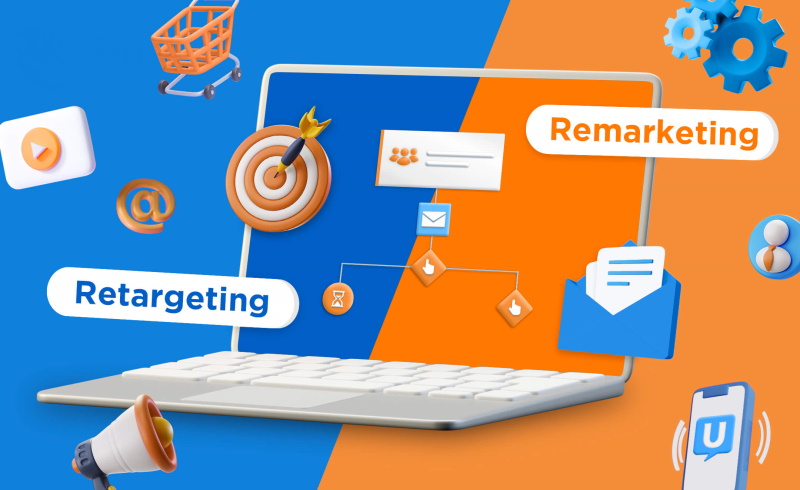
Retarget vs. Remarket: Are They Different?
Remarketing and retargeting are common terms used by paid media advertisers interchangeably. The two terms represent different strategies with entirely different goals that must be understood to be used effectively. The retarget vs retarget confusion is not only common in the pay-per-click (PPC) community but also among advertising platforms like Google Ads.
Essentially, retargeting involves using paid ads to re-engage audiences that have been on your website and social profiles before. On the other hand, remarketing is using emails to re-engage your past customers. In this retarget vs. remarket article, we look at the similarities and differences between the two terminologies to help you understand and use them effectively.
What Is Retargeting?
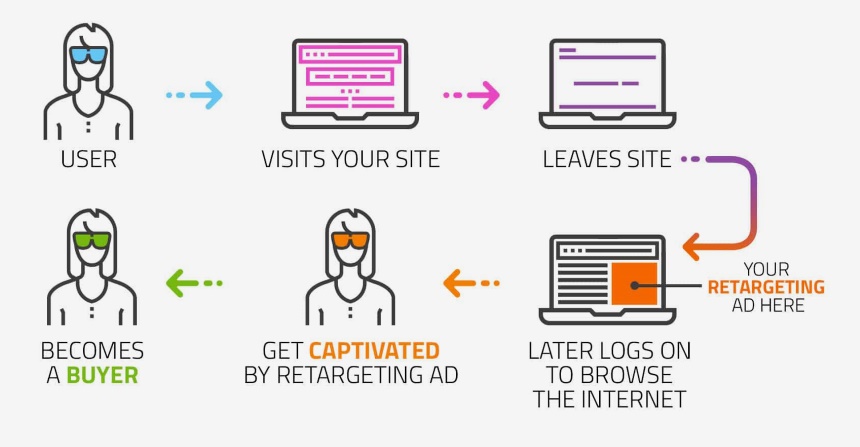 As mentioned earlier, retargeting is the use of ads to target audiences that have interacted with your website and social profiles before in various ways. When a user visits your website and takes a certain action, like clicking on a product, a cookie is set in their browser. You can then retarget them with ads once they leave the site based on the information.
As mentioned earlier, retargeting is the use of ads to target audiences that have interacted with your website and social profiles before in various ways. When a user visits your website and takes a certain action, like clicking on a product, a cookie is set in their browser. You can then retarget them with ads once they leave the site based on the information.
The ads are usually placed by third parties like Google Display Network and Facebook, allowing your ads to be displayed on other sites that your website visitors visit. According to Forbes, there are numerous ways of restructuring a retargeting campaign.
Types of Retargeting
There are two primary types of retargeting, list-based and pixel-based. Each works differently, and depending on your campaign goals; they have different benefits.
Pixel-based
Pixel-based retargeting is a way of re-displaying your products or content to all of your site visitors. According to an article by Hubspot, it is the most common type of retargeting. When someone visits your website, a pixel, aka an unobtrusive piece of JavaScript, is set on their browser. Once they leave your website to browse the web, the cookie notifies retargeting platforms to display ads based on the information about the specific pages they looked at on your website.
The best thing about pixel-based retargeting is that it is instant. Your audience will get retargeted immediately after they leave your website. Its main downside is that it is complex and takes a lot of time to implement. Also, since it is entirely based on how often people visit your website, you are likely to have fewer people in the campaign all the time.
List-based
List-based retargeting involves serving retargeting ads to customers that interacted with your website. It only works if you have someone’s contact information in your database. It is less common than pixel-based retargeting and is much easier to implement as you can have highly customizable criteria for your ads based on more than just behavior.
List-based retargeting involves uploading a list of the email addresses of your past customers to a retargeting campaign on a social network like Twitter or Facebook. The social network platforms will then identify users with the same email address and serve them retargeting ads.
The only downside of list-based retargeting is that a customer may give you one email address and the social network platforms another. Moreover, since you are in charge of uploading the contact list to a retargeting campaign, list-based retargeting is less timely and automatic than pixel-based targeting.
Benefits of Retargeting
According to a Stanford Business Graduate School research article, retargeted ads affect consumer behavior, and the average click-through rate for retargeted ads is 0.7%. Here are the benefits of retargeting;
Higher conversions: High traffic leads to more prospective conversions. If customers return to your website and connect with your brand, they will likely be encouraged and take positive action.
Targets interested audiences: Retargeting allows you to reach only the people who have expressed interest in your brand, which is way better than shooting ads all over.
Great value for money: You may not get a high ROI from every penny spent on digital advertising, but with retargeting, if the conversion rates are high, you get maximum value for your spending on ads.
Promotes brand awareness: Your audiences may not take action when they visit your website, but retargeting makes them aware of your brand. Brand exposure is highly beneficial for business growth.
What Is Remarketing?
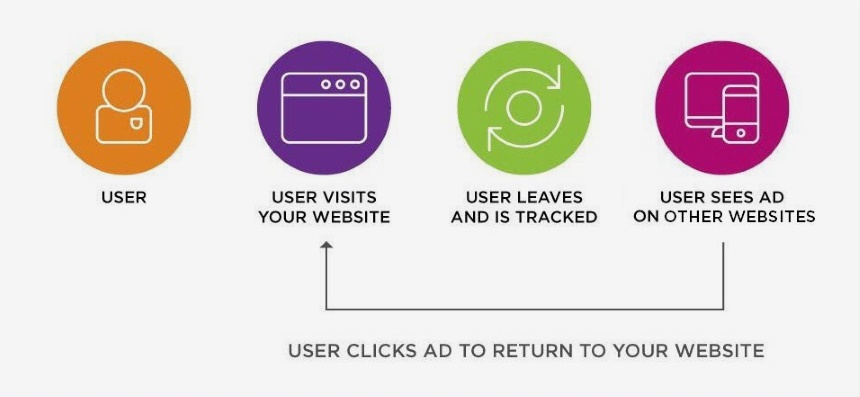 Remarketing involves re-engaging customers via emails. In essence, it is the process of tagging your website’s visitors and serving them content once they leave your website to re-engage them. Remarketing allows you to reach people who have shown interest in or done business with your brand. The prospective customers could be watching the news or checking their emails, and your content pops up to remind them to complete an action they had started. You could also show them new content that could further a buying decision.
Remarketing involves re-engaging customers via emails. In essence, it is the process of tagging your website’s visitors and serving them content once they leave your website to re-engage them. Remarketing allows you to reach people who have shown interest in or done business with your brand. The prospective customers could be watching the news or checking their emails, and your content pops up to remind them to complete an action they had started. You could also show them new content that could further a buying decision.
Types of Remarketing
Here are different types of remarketing you can apply to your campaign;
1) Facebook Pixel Remarketing
 Facebook pixel remarketing is a type of social media marketing. It involves advertising to people who have interacted with your website on Facebook. You can target people on Facebook using different criteria. For starters, you can target your past website visitors if they use the same Email on Facebook. You can also target people who interact with your Facebook page. Anyone who visits your page and saves one of your posts could use a remarketing ad or content to further a buying decision.
Facebook pixel remarketing is a type of social media marketing. It involves advertising to people who have interacted with your website on Facebook. You can target people on Facebook using different criteria. For starters, you can target your past website visitors if they use the same Email on Facebook. You can also target people who interact with your Facebook page. Anyone who visits your page and saves one of your posts could use a remarketing ad or content to further a buying decision.
2) Google Display Remarketing
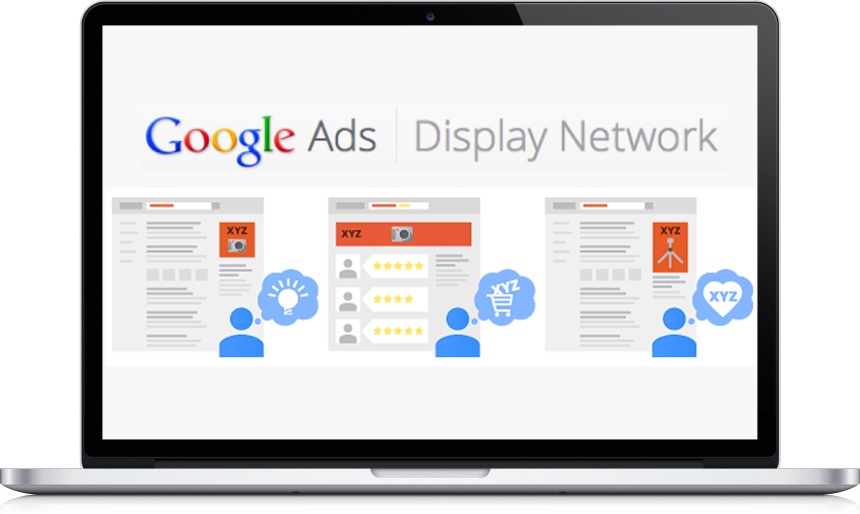 Google display remarketing is another popular type of remarketing. If you already advertise on Google, you only need to add a piece of Google marketing code, commonly known as a tag or pixel, to your website. Your website visitors will be added to your remarketing campaigns with browser cookies. You can customize the Google marketing code to reach interested prospects in different categories.
Google display remarketing is another popular type of remarketing. If you already advertise on Google, you only need to add a piece of Google marketing code, commonly known as a tag or pixel, to your website. Your website visitors will be added to your remarketing campaigns with browser cookies. You can customize the Google marketing code to reach interested prospects in different categories.
For instance, if you own an e-commerce website for selling kitchenware, you can create a Google marketing code like ‘pots’ to target the visitors that have interacted with the content on your site that sells pots. This way, you can easily show these specific visitors highly targeted display ads that market your pots. Your goal is to draw them back in to purchase your pots, and you can do that with attractive deals like ‘free shipping.’
According to Google, the Google Display Network reaches over 90% of internet users globally. Your previous website visitors can see your brand’s ads whenever they browse any of the Google partner sites in the Google Display Network.
Google recommends beginning your remarketing campaigns with everyone that visits your website’s homepage. However, this would increase your remarketing costs as you would target more people. You can have a lower cost per click and increase ad relevancy by targeting narrowly.
3) Email Remarketing
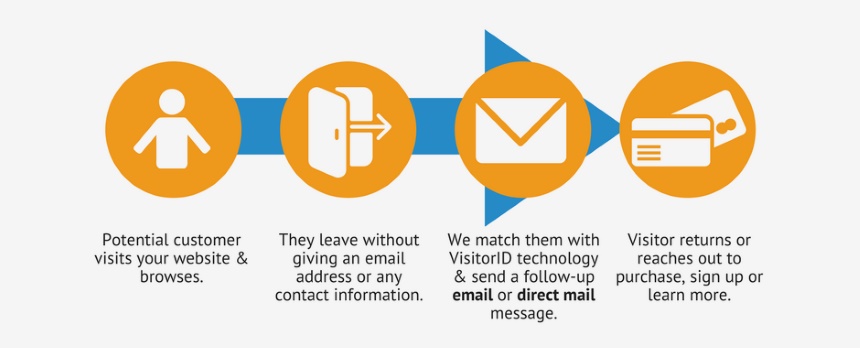 Email is another fantastic way of remarketing. Unlike most remarketing methods, Email does not involve paid advertising. You can build an email list and send reminder emails and promotions to all prospective customers that subscribe to your list. Building an email list is a no-brainer. All you need to do is create a short form that encourages your website visitors to submit an email address with an attractive incentive like a special discount or newsletter.
Email is another fantastic way of remarketing. Unlike most remarketing methods, Email does not involve paid advertising. You can build an email list and send reminder emails and promotions to all prospective customers that subscribe to your list. Building an email list is a no-brainer. All you need to do is create a short form that encourages your website visitors to submit an email address with an attractive incentive like a special discount or newsletter.
You can also email to visitors who have abandoned their carts on your website, encouraging them to complete the purchase. For those who finished a purchase, you can recommend something else they may like. The best thing about Email remarketing is personalization. You can use email management platforms to send out mass emails addressing each user by their name.
Benefits of Remarketing
Remarketing has numerous benefits, including;
Increases brand awareness: Just like retargeting, Remarketing increases online brand awareness and recognition. It helps re-establish the brand in prospective customers’ minds. For instance, if you visit Sephora’s website and add a perfume to the cart, then abandon the cart, Sephora will reach you through a Facebook remarketing ad to get you to complete the purchase. Even if you don’t revisit the website to complete the purchase, the perfume from the brand will stick in your mind.
Increases conversion rates: At the end of the day, all of your marketing is meant to drive conversions. If done well, remarketing can lead to high conversion rates as it targets the right people at the right time and encourages them to revisit your website. The more visitors your website gets, the more sales you are likely to make.
Leads to a high ROAS: ROAS means return on ad spend, and it is the amount of profit you make from marketing. In essence, it is the amount of money you get in relation to what you spend on a marketing campaign. Remarketing results in a higher ROAS because it targets an audience already interested in your brand, guaranteeing higher conversion rates. More conversion rates mean more purchases and revenue.
Reaches relevant prospects and keeps your brand in their minds: Reaching the most relevant audience is one of the most crucial elements of marketing. Your marketing efforts would go to waste if your audience is not receptive to what you are selling. No one would be more receptive to your ads than the people who have visited your website and purchased one or two items. .
Remarketing & Retargeting Confusion
There is a lot of confusion about these two marketing terms in the Per Paid Click community. Many people use the words interchangeably, including experienced advertisers. Renowned advertising platforms like Google Ads also don’t help the situation when they use remarketing and retargeting interchangeably.
Google refers to remarketing as using ads to target your website’s past visitors. This is inaccurate as remarketing is a strategy meant to re-engage customers based on their previous purchases. As a matter of fact, if you read Google’s descriptions of retargeting and remarketing you would conclude the two terms have the same meaning.
Remarketing has grown to become an umbrella term as its concept has expanded to include both retargeting and remarketing strategies. For instance, customer list marketing is defined as targeting customers by collecting their emails and serving them ads. It emphasizes on customers and not previous website visitors. The definition is similar to that of remarketing. In Google Ads, remarketing is a combination of retargeting and remarketing features.
In a nutshell, it is easy to argue that retargeting is a form of remarketing in the present marketing space, but they are not the same thing, and it is crucial to understand each of them well.
Retargeting vs. Remarketing: Differences
 Retargeting and remarketing have the same goal of reaching out to and encouraging your previous website visitors to visit again and make a purchase. However, the two concepts are not similar. The difference between remarketing and retargeting lies in the strategy each uses. Retargeting campaigns use cookies to serve your prospective customers with ads. On the other hand, remarketing campaigns collect email addresses from prospects and sends them emails to re-engage them based on the buying cycle stage they are in.
Retargeting and remarketing have the same goal of reaching out to and encouraging your previous website visitors to visit again and make a purchase. However, the two concepts are not similar. The difference between remarketing and retargeting lies in the strategy each uses. Retargeting campaigns use cookies to serve your prospective customers with ads. On the other hand, remarketing campaigns collect email addresses from prospects and sends them emails to re-engage them based on the buying cycle stage they are in.
Effectiveness
Retargeting and remarketing are both effective ways of keeping your brand in the minds of your prospects. Which one would give you a higher ROAS?
Studies show that retargeting ads have a click-through rate that is 10% higher than display ads for certain brands. Some companies have even realized 50 to 60% conversion rates with retargeting ads.
Remarketing campaigns are known to lead to higher conversion rates for cart abandonment, especially if done instantly, like an hour after the visitor leaves a site. It is much easier to get a prospective customer to react within such a short timescale. Retargeting does not guarantee such a high likelihood of re-engaging a prospect.
Which One to Use
As mentioned before, retargeting and remarketing have the same goal of re-engaging your website’s visitors. However, they are two different concepts, and their effectiveness depends on the segment you choose to use them for.
Retargeting campaigns are effective when used to focus on prospects that aren’t as far in the buying cycle and have already shown interest in your brand. Retargeting ads keep your brand in the prospects’ minds so that when they are ready to buy they are sure about their decision. Exposure to your ads and frequent visits to your website helps the prospects build trust in your brand.
Retargeting campaigns are also perfect if you are experimenting with a low daily PPC budget. When you can only get a few clicks per day, you want to make sure they are coming from top prospects.
In addition, retargeting is the better option if you need more engagement. It is one of the most efficient ways of driving more traffic to your website.
Remarketing campaigns are highly effective when used to target customers who have already shown interest in your brand either by purchasing your products or abandoning a cart. Remarketing aims at helping the prospect overcome their buying barriers. It is more personal as it relies on understanding why the customer abandoned their cart and how you can re-engage them to complete their purchase.
Besides reducing cart abandonment, remarketing can help you reach inactive users. When a customer purchases something from your website, they will give their email address as part of the email purchase, which you can use to follow up on them when they disappear for over 30 days without visiting your website.
Furthermore, you can use remarketing to cross-sell. Once a customer purchases something from your website, you can follow up with a marketing email that recommends other complementing products on your website.
Choosing between retargeting and remarketing is a matter of personal preference, as each of the strategies are critical ways of engaging repeat and potential customers. They both help you keep your brand at the forefront of your prospective customers’ minds. Moreover, the strategies complement each other. You can use retargeting to create brand awareness to your interested audience then use remarketing to re-engage and convert customers at the end stages of the buying cycle.
Tips for Retargeting and Remarketing
Here are pro tips for retargeting and remarketing that will set you apart;
1. Communicate with the Audience Appropriately
 To convert your audience into customers, you have to communicate appropriately. This can only happen once you understand the audience. You can come up with a compelling call to action, commonly known as a lead magnet to easily convert your audience. A lead magnet has to be something you know your repeat customers and new prospects would love.
To convert your audience into customers, you have to communicate appropriately. This can only happen once you understand the audience. You can come up with a compelling call to action, commonly known as a lead magnet to easily convert your audience. A lead magnet has to be something you know your repeat customers and new prospects would love.
To come up with a lead magnet, do a quick analysis of your site’s traffic to see what’s popular among your audience. Analyze the conversion rates for the most popular pages or products, then create a lead magnet to target more customers.
2. Understand Your Audience
 Understanding your audience is a critical marketing element. Many brands make the mistake of targeting everyone that visits their website similarly. Customers visit your website for different reasons and you should make a point of identifying their buyer intentions by looking at the pages they go to. Once you understand your prospective customer’s buyer intents, serve them with matching retargeting ads. You can create a custom audience to target your prospective customers effectively.
Understanding your audience is a critical marketing element. Many brands make the mistake of targeting everyone that visits their website similarly. Customers visit your website for different reasons and you should make a point of identifying their buyer intentions by looking at the pages they go to. Once you understand your prospective customer’s buyer intents, serve them with matching retargeting ads. You can create a custom audience to target your prospective customers effectively.
For example, if you have a website that sells clothes and someone visits to shop for a jacket, you can create a custom audience called ‘jacket’ to target everyone interested in jackets across all of the marketing platforms.
3. Try Out Different Ads
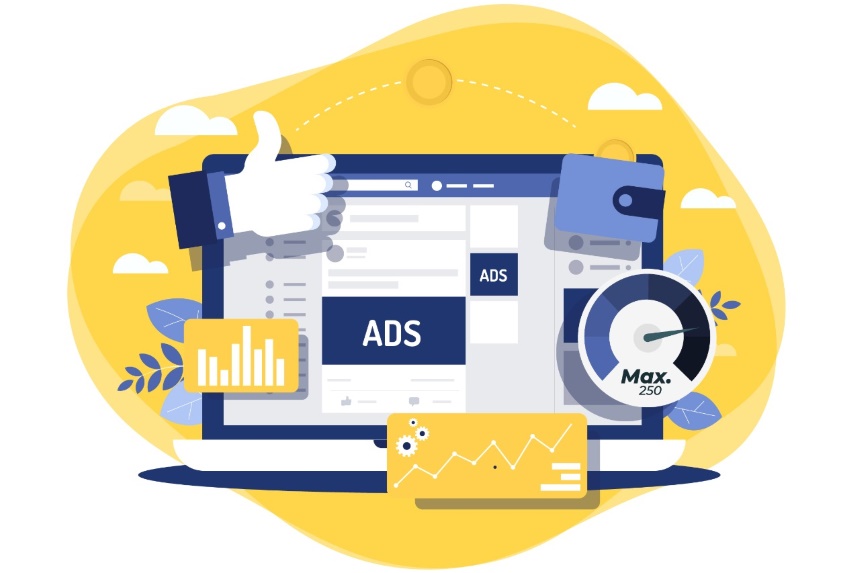 Showing the same ads to a visitor numerous times can cause ad blindness. The only way to prevent ad fatigue is optimizing your ads. Here is what you can do to optimize your ads;
Showing the same ads to a visitor numerous times can cause ad blindness. The only way to prevent ad fatigue is optimizing your ads. Here is what you can do to optimize your ads;
Use ad rotation: Ad rotation will help you avoid showing an individual visitor the same version of an ad. You can create up to 5 versions of the ad then put them on rotation to attract more clicks.
Frequency capping: Basically, this involves checking your ad frequency by limiting the number of times a visitor views your ad over a given period of time. A frequency cap helps you get the highest reach if your ads are shown to more people overall. Google and Facebook remarketing campaigns both have the frequency capping feature.
Split test ads: Split testing involves testing different ad sets against each other to see which performs better. It is crucial if you want to improve your ad performance and increase your customer conversion rates.
Understanding your audience also helps you schedule your ads at the right time. Scheduling your ads at the right time increases your ROAS (return on ad spend) because you increase the chances of your prospects seeing the ads. You must research your audience to know when they are likely to be online so you can set your ads to appear at those specific times.
4. Have a Clear Objective
 You need defined goals when creating remarketing and retargeting campaigns so you can structure effective strategies. The two main goals that should guide you in structuring your campaign are;
You need defined goals when creating remarketing and retargeting campaigns so you can structure effective strategies. The two main goals that should guide you in structuring your campaign are;
Increase brand awareness: When creating your remarketing and retargeting campaigns, you should aim at keeping your brand at the forefront of all your prospects’ minds.
Make customers act: Another main goal for retargeting and remarketing is to get your prospective customers to act.
With these goals in mind, you can create objectives with specified numbers regarding conversions and how impressed your customers are. The objectives will guide you to achieve tangible results.
Final Thoughts
The line between retargeting and remarketing keeps getting blurry, especially with all the marketing bigwigs, using the terms interchangeably and inaccurately. The two share a goal; to increase brand awareness and conversions from people most likely to buy from your brand. However, they are entirely different concepts and the difference between them mainly lies in the strategies each uses.
Retargeting is more focused on paid ads in various forms targeting a wide range of prospective customers. Remarketing, on the other hand, is more focused on reaching out to customers who have already shown interest in your brand by purchasing something. We have provided all the information you would need to understand and get over the retarget vs. remarket confusion. Both are exciting marketing strategies that can boost your business if used correctly.
References:
https://blog.hubspot.com/marketing/retargeting-campaigns-beginner-guide
https://www.gsb.stanford.edu/insights/retargeted-advertising-sooner-better-later

